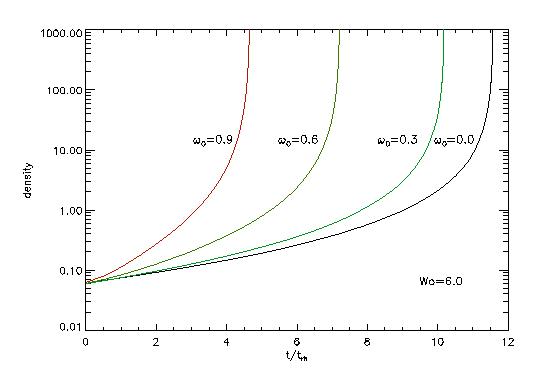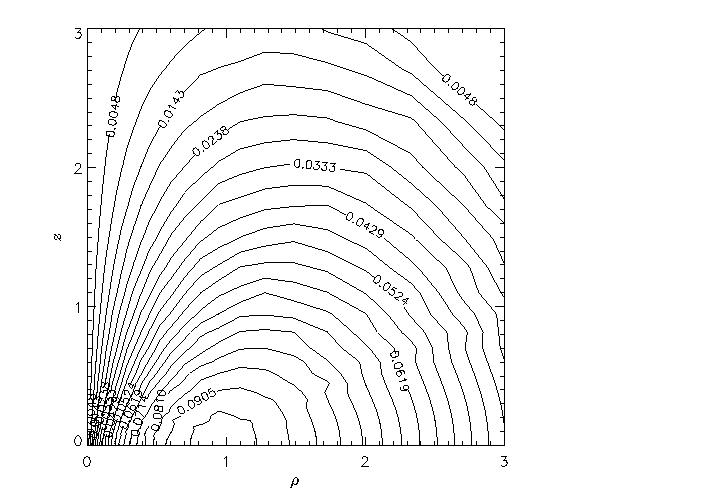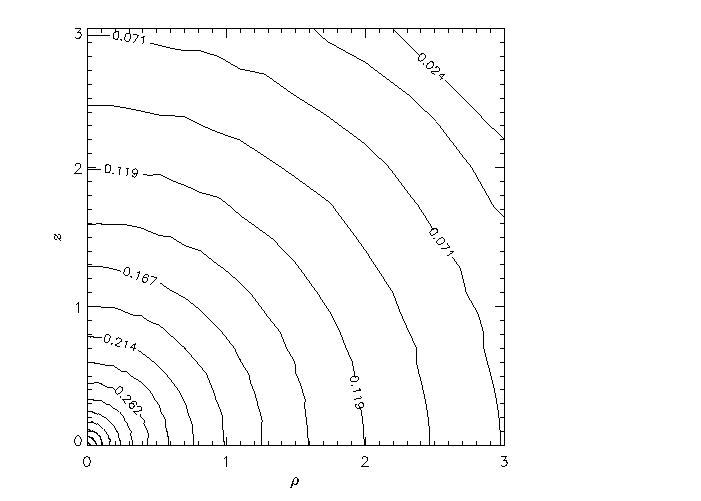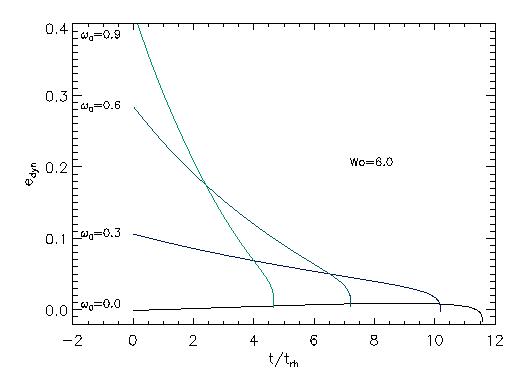"2D Fokker-Planck models of rotating clusters" |
|---|

 and
and

 were used)
were used)

 , σc: central velocity dispersion
, σc: central velocity dispersion
 ,dimensionless angular velocity (rotating parameter)
,dimensionless angular velocity (rotating parameter)
 ,dimensionless potential (King parameter)
,dimensionless potential (King parameter)

The dynamical ellipticity is calculated following Goodman (1983), given by

Initial parameters of the 12 rotating cluster models.
| King parameter Wo | rotating parameter ωo | |||||
|---|---|---|---|---|---|---|
| 3.0 | 0.0 | 0.30 | 0.60 | 0.90 | ||
| 6.0 | 0.0 | 0.30 | 0.60 | 0.90 | ||
| 9.0 | 0.0 | 0.06 | 0.08 | 0.10 | ||
Evolution grid in interval coordinates for the 12 models. The cells contain the total number of datasets available for the grid point with given time and ellipticity.
| Ellipticity | Time (t/trh) | |||||
|---|---|---|---|---|---|---|
| (0,2) | (2,4) | (4,6) | (6,8) | (8,10) | (10,12) | |
| (0.00-0.02) | 59 | 16 | 40 | 93 | 58 | 58 |
| (0.02-0.04) | 5 | 24 | 15 | 10 | ||
| (0.04-0.06) | 8 | 27 | 9 | 14 | ||
| (0.06-0.10) | 28 | 62 | 11 | 2 | ||
| (0.10-0.15) | 19 | 24 | 3 | |||
| (0.15-0.20) | 6 | 7 | ||||
| (0.20-0.25) | 4 | |||||
| (0.25-0.30) | 5 | |||||
| (0.30-0.50) | 3 | |||||
We present the evolution in time of global parameters, classified by initial King- and rotating parameters (see description below)
| Model (Wo, ωo) | Datafiles |
|---|---|
| (3,0.00) | time030_000 |
| (3,0.30) | time030_030 |
| (3,0.60) | time030_060 |
| (3,0.90) | time030_090 |
| (6,0.00) | time060_000 |
| (6,0.30) | time060_030 |
| (6,0.60) | time060_060 |
| (6,0.90) | time060_090 |
| (9,0.00) | time090_000 |
| (9,0.06) | time090_006 |
| (9,0.08) | time090_008 |
| (9,0.10) | time090_010 |

The figure shows the acceleration of core-collapse due to rotation (central density in code units vs. time). The black line represents a non-rotating, the red line a high initial rotating case (ωo=0.9). See also Fig. 3 of Fiestas et al. 2004.
![]() -routine to generate the plot: dtime.pro
-routine to generate the plot: dtime.pro

The figure shows the initial distribution function (King model) against angular momentum (curves of constant energy) for the model (6.0,0.3) See also Figs. 1 and 2 of Fiestas et al. 2004.
![]() -routine to generate the plot: df.pro
-routine to generate the plot: df.pro

The figure shows a contour map (on meridional plane) of the rotational velocity for a collapsed model of initial (6.0,0.9) at time t/trh=4.7. Distances are given in units of initial core radius, velocity in code units.
![]() -routine to generate the plot: vrot.pro
-routine to generate the plot: vrot.pro

Contour map of 1-d velocity dispersion (on meridional plane) for a collapsed model of initial (6.0,0.9) at time t/trh=4.7. Distances are given in units of initial core radius, velocity in code units.
![]() -routine to generate the plot: vdisp.pro
-routine to generate the plot: vdisp.pro

This figure shows the time evolution of dynamical ellipticity for the model Wo=6 and different initial rotation parameters (See also Fig. 4 of Fiestas et al. 2004).
![]() -routine to generate the plot: edynage.pro
-routine to generate the plot: edynage.pro
 and set to 1
and set to 1